Pollution total dumped in lake hits 3.7 billion gallons
by Chad Selwesky
The rain showers of Sunday and Monday created sewage overflows that dumped 79 million gallons into Lake St. Clair, bringing the total pollution this year from sewer systems discharged into the lake to 3.7 billion gallons.The GWK Drain in Oakland County released 72 million gallons, and the Chapaton sewage basin in St. Clair Shores spilled another 7 million gallons. Both facilities partially treat their discharges by adding chlorine and removing solid waste before releasing them into the waterways. (more…)
No Black Friday
Pure Water Products is following its Black Friday closing policy occasioned by a shopping accident sustained during the 2012 shopping season. Please read details. The company’s retail store in Denton, TX will reopen for business as usual on Saturday December 29.The Pure Water Occasional for November 24, 2014
In this pre-Thanksgiving Occasional, you’ll hear about DEA, MEA, TEA, BHA. & BHT. Also there are stories about gummy lake invaders, lead in Brick, Clean Water Action, and fish farming. There’s yet another long, long beached oarfish and a tale of oily wastewater near Plaquemines Parish. Learn of the threat to Hetch Hetchy water and find out how the just and the unjust stack up rainwise. Glacier National Park is threatened by its loss of glaciers and copper-silver treatment for Legionella is questioned. Hear of polluted salmon streams and a modern-day Atlantis. Learn how Barack Obama pissed of the Australians, how Coca Cola pissed off the Northern Indians, and how you can piss off your Grandma when she visits for Christmas. You’ll be surprised to learn the number of desal plants in the world, the number of viruses in a drop of sea water, and the TDS of the Arabian Sea. There are articles by Bee Sharper, Pure Water Annie, and, as always, there is much, much more.The Pure Water Occasional is a project of Pure Water Products and the Pure Water Gazette.
To read this issue on the Pure Water Gazette’s website, please go here. (Recommended! When you read online you get the added advantage of the Gazette’s sidebar feed of the very latest world water news.)
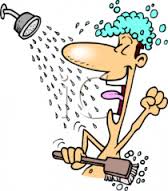
Do you know how many toxic chemicals are in your shampoo, your lipstick, your toothpaste?
by Joy McCarthy

We’ve been using cosmetics and personal-care products for thousands of years, from body paint to eye makeup, in nearly every single culture in the world. Egyptians first started using scented oils and ointments to clean and soften skin. They were also the first to use toxic chemicals in their beauty products, with lead and arsenic being common ingredients.
Fast-forward to today and you’d assume things have gotten better, right? (more…)
Brick residents sound off on lead in their water
by Kevin Pentón
BRICK – Township residents are concerned over a recent report that elevated lead levels were found in the water of nearly half the homes tested this summer.
After reading the initial Asbury Park Press story on the issue, resident Michele Richards said she went out and spent over $10 on a lead test. Afterwards, she said she learned she would need to spend at least $30 so a laboratory can analyze the results.
“I pay enough taxes as it is,” Richards said. “I don’t feel like I should have to pay to test my drinking water.” (more…)
Toxic Chemicals in Personal Products End Up in the Water — November 23, 2014
Posted November 23rd, 2014
Do you know how many toxic chemicals are in your shampoo, your lipstick, your toothpaste?
by Joy McCarthy

We’ve been using cosmetics and personal-care products for thousands of years, from body paint to eye makeup, in nearly every single culture in the world. Egyptians first started using scented oils and ointments to clean and soften skin. They were also the first to use toxic chemicals in their beauty products, with lead and arsenic being common ingredients.
Fast-forward to today and you’d assume things have gotten better, right?
Not exactly. In 2007, researchers at the California-based Campaign for Safe Cosmetics found what they thought to be “hazardous levels” of lead in one-third of the red lipsticks they tested. And lead isn’t the only issue. There are over 84,000 chemicals registered for use with the U.S. Environmental Protection Agency. (Being registered does not imply safety, only that they are used and tracked in some capacity.) Only 200 of these chemicals have been reviewed by Canada’s Chemicals Management Plan. (Again, these chemicals are not necessarily safe.) We’re still using chemicals we know are toxic, as well as a host of others whose effects are unknown. (more…)
Getting Drinking Water from the Sea
by B. Sharper
Pure Water Gazette numerical wizard Bee Sharper rolls out some numbers on sea water desalination.
Approximate number of desalination plants in the world as of 2013 — 17,200.Daily production capacity of these plants in gallons — 23 billion.
Percentage of these plants that make potable water from sea water — 59%.
Percentage that make potable water from brackish water — 22%.
Percentage that make potable water from river water and wastewater — 9%. (more…)
Industrial Pollution Is Turning Lakes into “Jelly”
by Rachel Feltman
As Canadian lakes have become more acidic, they’ve become increasingly dominated by jelly-like plankton that are throwing things out of whack, new research suggests. And these gummy invaders aren’t going anywhere. Soon, they could even disrupt the country’s water supply.Years of industrial pollution have replaced the calcium that should be in Canadian soil with acid. Over time, as the drainage areas that feed the country’s lakes are leeched of their calcium, so are the lakes themselves.
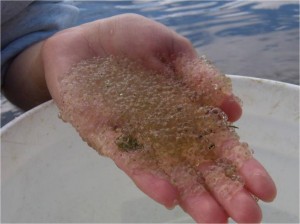
Gummy Invaders are Bad News for Plankton (Click Picture for Larger View)
The Pure Water Occasional for November 17, 2014
In this cool November Occasional you’ll hear about fracking chemicals, John Muir, China’s Lancang Dam, pesticides in Coke and Pepsi, and the “Waters of the United States” rule. Learn how drought increases thievery, what’s happening to the Salton Sea, and why they’re having a sludge war in Charleston. Then there’s the “Big Thirst,” the soft drink fight at Gurarat, pollution from the tanneries of Bangladesh, the growing popularity of farmed fish, the number of motorist who die of drowning, alum, ultrafiltration, nephelometric units, the Jordan aquifer, a beached whale in Nicaragua, recycled numbers from B. Sharper, Pure Water Annie on turbidity, and, as always, there is much, much more.The Pure Water Occasional is a project of Pure Water Products and the Pure Water Gazette.
To read this issue on the Pure Water Gazette’s website, please go here. (Recommended! When you read online you get the added advantage of the Gazette’s sidebar feed of the very latest world water news.)
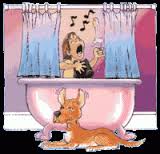
Seen, but not noticed
In his 2011 book “The Big Thirst,” Charles Fishman explains how water comes from space and has been on Earth in a fixed amount since the planet’s been here. It’s an fundamental part of weather and the ecosystem and it’s the essential molecule in our bodies. (more…)According to USGS, National Water Use Is at Lowest Levels Since Before 1970: Conservation Works
Water use across the country reached its lowest recorded level in nearly 45 years. According to a new USGS report, about 355 billion gallons of water per day (BGD) were withdrawn for use in the entire United States during 2010. This represents a 13-percent reduction of water use from 2005 when about 410 BGD were withdrawn and the lowest level since before 1970. “Reaching this 45-year low shows the positive trends in conservation that stem from improvements in water-use technologies and management,” said Mike Connor, Deputy Secretary of the Interior. “Even as the US population continues to grow, people are learning to be more water conscious and do their part to help sustain the limited freshwater resources in the country.” (more…)Turbidity
![pwanniemedium[1]](http://www.purewatergazette.net/blog/wp-content/uploads/2012/05/pwanniemedium1-246x300.jpg)
Pure Water Gazette Technical Writer Pure Water Annie Explains Turbidity
Turbidity can be thought of as the general cloudiness of water. It is
actually a measurement of the degree to which particulate in the water
interferes with light transmission. Suspended particles absord and
diffuse light.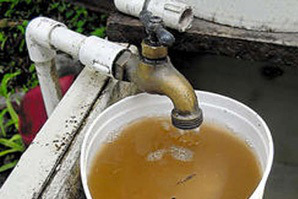
High turbidity can be identified without a water test.
A turbidity test uses an instrument that passes light through the
water and measures the amount of interference from suspended
particles.The turbidity test reports results on an artificial scale
using nephelometric units, or ntu. Anything above one ntu is technically
an EPA “action level” violation, although the human eye only begins to
detect turbidity in water at about 4 ntu. Therefore, water that appears
completely clear to the eye can have excessive turbidity with health
implications. (more…)



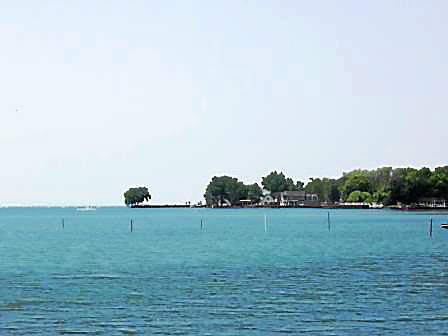
![occasionalbanner300[1]](http://purewatergazette.net/blog/wp-content/uploads/2013/04/occasionalbanner3001.gif)
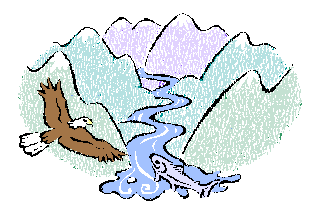


No comments:
Post a Comment